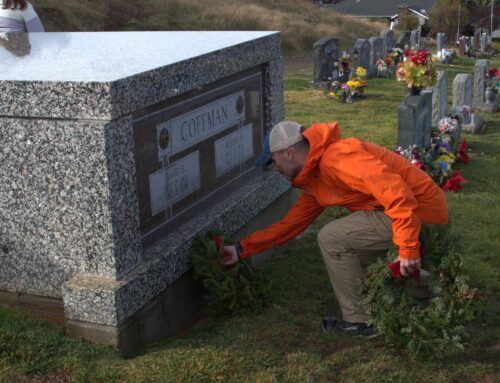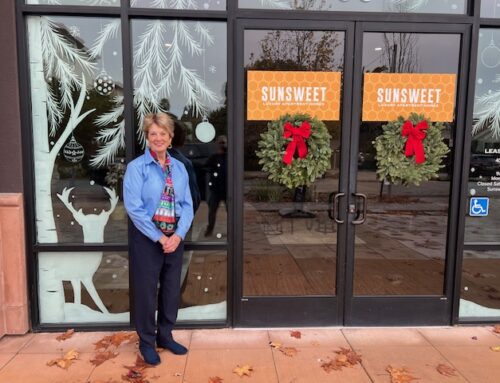Council could decide Nov. 19 whether a longer trial is warranted
Published in the Nov. 12-25, 2014 issue of Morgan Hill Life
By Karl Bjarke
Change is coming to Morgan Hill’s downtown next year. With multiple downtown projects all being planned at once and moving forward quickly to meet a December 2015 deadline, it is a lot to keep track of. One project that has been in the forefront in recent weeks is the Complete Streets project.
The term “Complete Streets” is not just a fad conjured up by the local biking community to steal away vehicle lanes and turn them into bike lanes. It refers to roadways that provide a balanced system accommodating motorists, pedestrians, bicyclists, children, persons with disabilities, seniors, and public transportation. Assembly Bill 1358, otherwise known as the Complete Streets Act of 2008, made it mandatory for all cities, including Morgan Hill, to update their General Plans to include roadway planning that provides for Complete Streets. What’s more, state and federal grant funds for road and transportation projects — a rare resource for fixing and building our roadways — will not be available to cities that do not abide by Complete Streets planning.
The city of Morgan Hill, in partnership with paid consultants and many community volunteers, implemented a two-day Complete Streets demonstration over the weekend of Oct. 24 and 25. Monterey Road was narrowed to one lane in each direction between First and Third streets. The main purpose for this demonstration was to test some of the logistics that might be employed for a longer term lane narrowing trial in the future.

Photo by Marty Cheek
Volunteers tape a bike lane on Monterey Road Oct. 24. The city reduced the number of lanes to one in each direction from First to Third streets through Oct. 25 to test traffic logistics before embarking on a longer trial period early next year.
Why would the city even consider causing such a disruption to the traffic flow on the busiest street in Morgan Hill? The primary reason is to establish a downtown environment that is friendlier to families, pedestrians, bicycle riders, diners, and, according to the many studies that have been done on the subject, to improve the economic viability of the businesses in the downtown. During the community outreach efforts this past spring about how to make the downtown more active and vibrant, staff heard clearly from the Chamber of Commerce and the Morgan Hill Downtown Association that a lane reduction trial should be tried.
Having spent several hours watching traffic, bike and pedestrian goings on and answering questions from the public during the Oct. 24 and 25 demonstration event, I made the following observations. For the most part, the lane reduction accomplished the goals of a friendlier downtown. It was noticeably quieter while standing on the sidewalk. I watched pedestrians having an easier time crossing the road at intersections where there is no signal because they only had to negotiate two lanes of traffic instead of four. Bicycle riders, from families to serious cyclists, comfortably used the buffered bike lane in the southbound direction.
On the flip side, I saw southbound traffic back up past Britton Middle School on Friday evening. Once the rush hour was over, however, traffic moved through the downtown without any noticeable back-ups. I spoke to a couple of business owners and the message I heard was that business was off Friday afternoon and evening. Part of this may have been due to a lack of parking along Monterey Road during the event. Under a longer trial period — if the City Council chooses to try it — most of the parking that exists today along Monterey Road would remain. Even with bike lanes, on-street parking would be one of the priorities.

Photo courtesy city of Morgan Hill
A volunteer tapes symbols on Monterey Road during the ‘Complete Streets’ demonstration in October.
What made the biggest impression on me about that weekend was the participation and feedback from the community. Setting up and taking down the event was truly a community project. Many citizens participated, even some who I know were opposed to the Complete Streets concept. Kudos to all those who stepped up and got involved. I was also quite impressed with the citizens who took the time to give us feedback, either by manually filling out the survey form, writing comments on the two community feedback walls, or through the social media outlets we were monitoring. Whether people were for or against the concept, they were all cordial and respectful. That says a lot about our community and is one of the reasons I love Morgan Hill.
Where is all this going? On Nov. 19, the City Council will hear a full report on the demonstration event and all the community work that went into it. Council members will be given a recommendation on whether to try a longer term trial — say, six months — to see whether the Complete Streets concept can make our downtown the most walkable, bike-friendly, urban, family oriented, and transit oriented neighborhood in Morgan Hill without causing traffic problems that can’t be overcome.
Karl Bjarke is a city engineer and the director of public works for the city of Morgan Hill.







